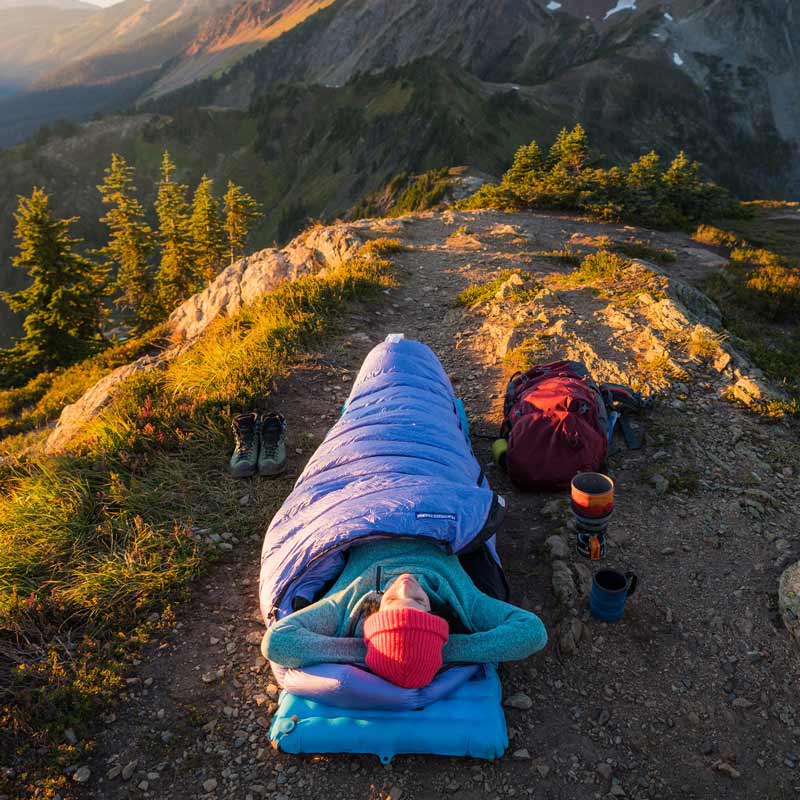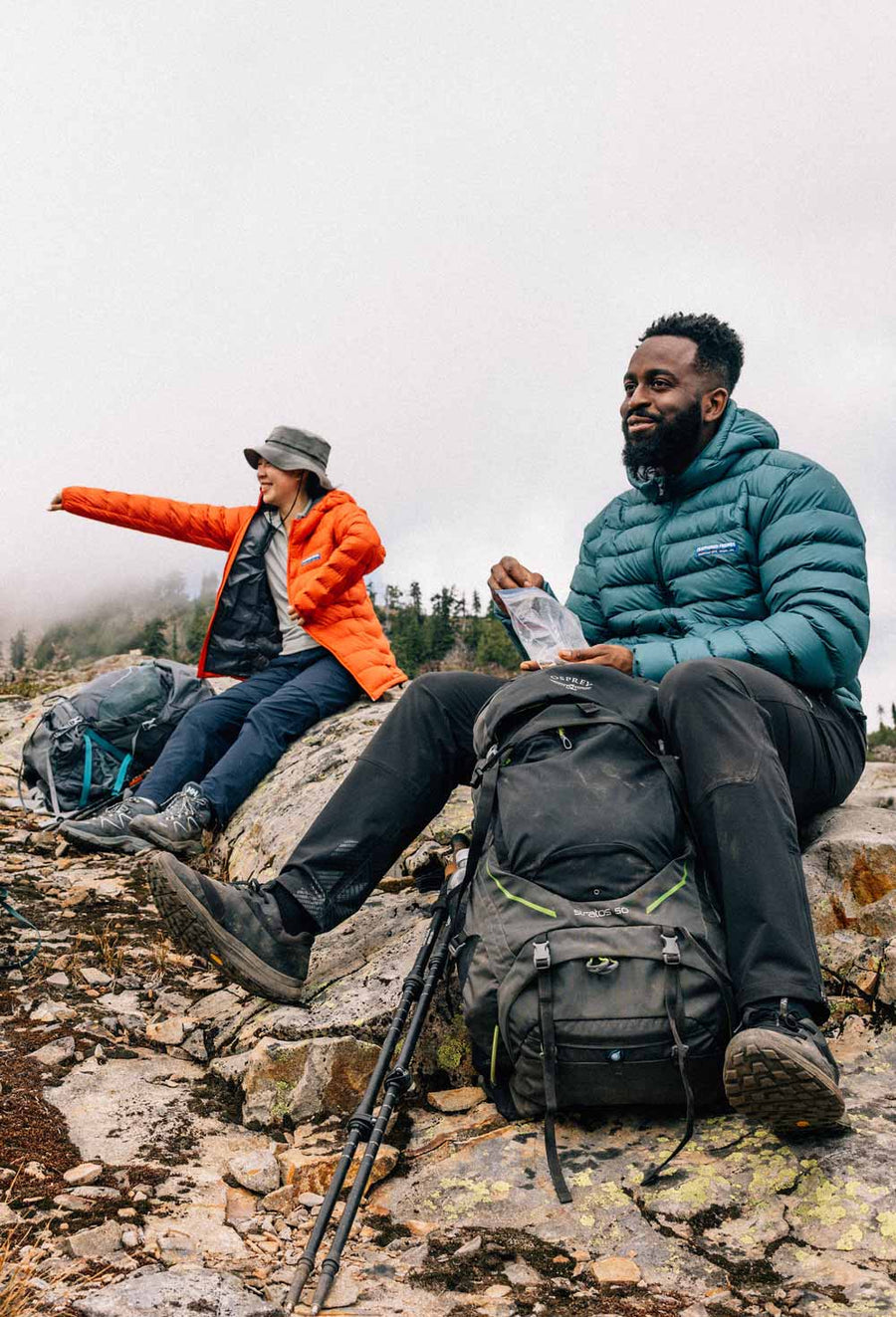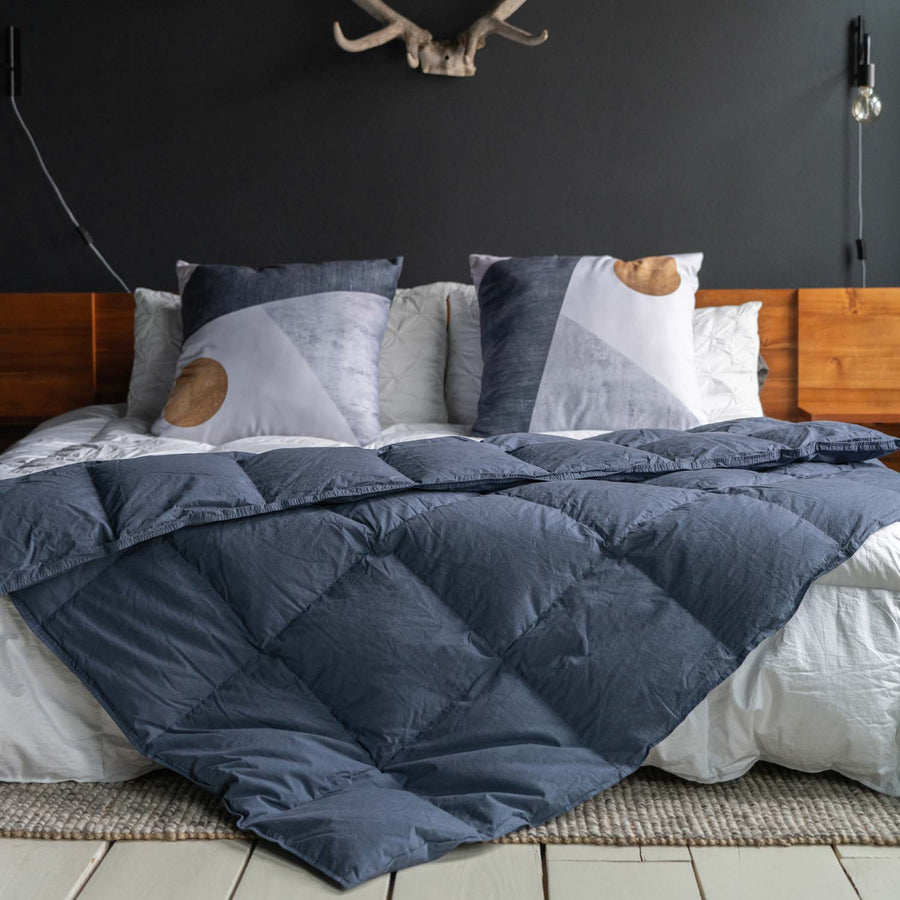Mountain Training Tips Part Two
Have you started training for that mountain yet? It has been two weeks since our last post, and it is already March!
Below are a few more tips to keep in mind as you try to get your body and mind ready to climb.
As before, be sure to consult with your physician before beginning any new activity. These posts are not a comprehensive training program, and don’t forget to learn and practice the necessary technical skills as well!
Words and photographs by Claire Giordano.
1. Simulate the climb with back-to-back training days
Will your climb be one day, two days, or three or more? Most of the volcanoes in Washington are two day climbs (unless you are a trail runner or doing a longer trip with multiple objectives and skill building lessons). This means our bodies must perform a few days in a row, and the best way to prepare for this is to do back-to-back training days or overnight backpacks.
Early in the spring my favorite strategy is to combine a hike on saturday with a mountain bike ride on Sunday. This not only provides some cross training, but also gives my joints a break from the heavy pack. Changing the activity also keeps me excited to get out there, as early season hikes in the lowlands can get awfully repetitive.
Once the weather improves, however, it is time to switch to back-to-back-hikes with substantial elevation gain. Elevation is the defining factor if any mountain; it is what makes them so imposing, awe inspiring, difficult to climb, and beautiful to summit. On Rainier for example, a two day climb means you will ascend about 5,000 vertical feet, try to sleep, and then ascend another 4,000 or so feet to the summit (and then the worst part, the descent all the way back to the car). These are some serious numbers, so pack as much elevation in your training hikes as you are able (keeping in mind your pack weight progression). For example, I did at least one back-to-back hiking weekend each month, with hikes that had at least 3,500 feet elevation gain and loss each day.
I found these training days to be helpful because they prepared my body and my mind. Day two is hard because you are tired, but this is where a strong mental attitude can make or break the climb. By delving repeatedly into that tired space of day two, I could recognize and overcome the negative thoughts that tested my perseverance on summit day.
3. Integrate physical activity into your daily life
Sticking to a rigid training regime can get burdensome and boring, so adding in fun active activities every day keeps it fresh and can help us stay motivated. The activities can be anything that helps with overall fitness, from yoga to weight lifting, kayaking, swimming, mountain biking etc. The sky’s the limit on activities, and what matters is finding something you enjoy doing enough to make it a regular part of your week.
When preparing for my climbs, I compliment training hikes with yoga and biking. Yoga helps me remain flexible and less likely to get injured. It is also a great opportunity to practice breathing techniques. Biking became the main supplement to my weekend hikes. During months leading up to Rainier I was biking at least an hour a day three days a week (easily integrated into my life by commuting to work). The bike commute gave me exercise every day, and made it easy to throw in some serious cardio and leg work on the way home by finding some big hills. I am convinced that the biking helped me reach the summit, as it greatly improved my cardiovascular fitness.
4. Don’t forget to have fun!
It is easy to become fixated on a goal and the steps to get us there, so it is important to remember that getting outside is hopefully fun. It might be type-two sufferfest fun, but finding the joy in each training activity and day outside is, to me, one of the big reasons I am out there in the first place. Not every day will be sunshine and butterflies frolicking in wildflowers, but learning to find the good things about a miserable hike goes a long way to preparing our minds for our bigger climbs, when there are inevitably low points where a positive mental attitude can keep us going.

5. Shake-down Climb
A month before climbing Rainier, I did a “practice” climb of a non-technical route on Mount Adams (a smaller volcano in WA), and it was one of the best ideas the whole summer.
A big mountain climb has so many variables that are out of our control; the weather, snow conditions, even the other people on our team. This makes it incredibly important that our personal gear and fitness are dialed in, and the best way to test it is on a non-technical practice climb.
On the shake-down climb or backpacking trip you will learn many useful things. I came away with a better understanding of how much food I would need (and which food I didn’t want to eat when half frozen and on top of a mountain), that I was lacing my boots too tightly, and found a few extraneous items I could take out of my pack. These little tidbits of knowledge, especially about my boots, made a tremendous difference on my actual climb.
If you don’t have a snowy peak to climb, then an overnight backpacking trip with similar elevation gain to your main objective is a great alternative (just make sure you wear your mountaineering boots).
6. Break in your boots
Which brings us to the last tip; wear your boots around a lot before you go anywhere near a trail, let alone a mountain.
Mountaineering boots are an awful lot like ski boots; stiff, clumsy, and awkward. They also have a propensity for shredding our feet. Before my climb I was most nervous about shoving my notoriously finicky and blistery feet into a new boot. So, I wore them walking around for 30 hours. This was easy for me at the time since I was working in retail, but you can do the same thing by making the boots your best friend. Going to the grocery store? The library? The bar? Throw those puppies on!
Wearing the boots for a long time before hiking or climbing in them softens the boot a little, and more than anything gets our feet use to new restrictive footwear. You might get weird looks, but I found most of the time the boots were a great conversation starter.
After you are completely tired of wearing them around in normal life, it is time for a hike. Start short and then build up as your feet allow. I also recommend carrying your normal hiking boots in case there were any issues (the last thing you want to do is open a big wound on your foot, since they take a long time to heal). Happy feet = a happy climber.
Have fun out there!
The post Mountain Training Tips Part Two appeared first on Expedition Tales.











Leave a comment